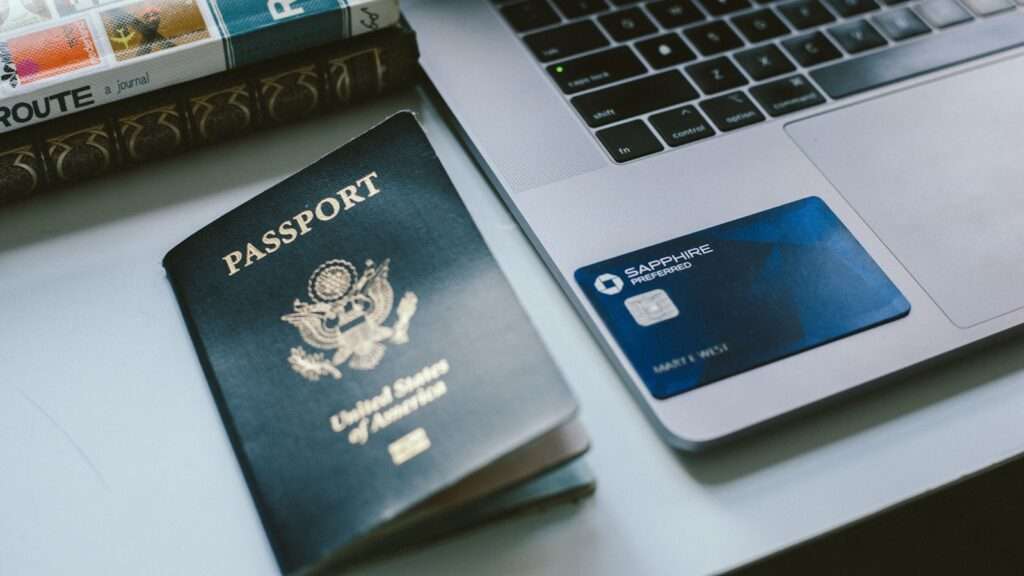The Chase Sapphire Preferred and Reserve Cards are perennial favorites among travel hackers for their generous welcome bonuses and flexible points program. However, simply obtaining the card isn’t the only way to leverage its potential. By strategically “churning” the card, you can maximize your points accumulation and unlock a world of travel opportunities.
After you read through the method on how to downgrade and reapply, please consider using our referral link to apply to help support our page by clicking the button below.
What is "Churning"?
Churning refers to the practice of applying for a credit card, meeting the spending requirement to earn the welcome bonus, then cancelling or downgrading the card before the annual fee renews (if applicable). This allows you to repeatedly capture the lucrative welcome offer without incurring long-term costs.
We don’t recommend churning your Chase cards exactly like this, as you don’t want to wear out your welcome with an already generous lender. But you can still benefit from multiple sign up bonuses from the same Sapphire cards by playing by the application rules set forth by the bank. It just takes some time…
The Rules: How to Know if You're Eligible
There are a few “firm” rules about being approved for the Sapphire cards, and a couple “soft” rules. The firm rules are written in boilerplate language on the application pages themselves, and (usually) aren’t able to be circumvented in any way. The soft rules are a little more fuzzy, and sometimes there are datapoints in the community about an application skirting these rules one way or another. We’ll talk about both of these scenarios.
- Timing (Hard Rule):
The Sapphire cards have eligibility language stating that you can’t and won’t be approved for a new Sapphire card with it’s sign up bonus if you’ve received that sign up bonus already within the past 48 months. This time period used to be 24 months, but Chase decided that a longer waiting period was needed. - Holding Multiple Sapphires at Once (Hard Rule):
This is a rule that didn’t always exist with Chase, but it’s well established now and was put in place to combat rewards abuse. The rule states this: you cannot get approved for a Sapphire application if you already have a Sapphire branded card. That means that if you already have a Sapphire Reserve, you won’t get approved for a Sapphire Preferred application, and vice versa. There are ways to somewhat circumvent part of this rule by way of product changing into a 2nd Sapphire card, but you won’t receive a SUB since it’s not a new application. - Eligibility (Hard-ish Rule):
The 5/24 Rule is in full effect for the Sapphire cards, as it is for almost every Chase branded credit card out there. If you’re unaware of what this rule is, please read our post all about the 5/24 rule first. If you’d rather have a quick summary, here it is: Chase will not approve you for a new credit card if you’ve been approved for 5 new cards within the past 24 months (5/24, get it?). You must be under 5/24 to get approved, full stop. - Credit Score (Soft Rule):
Because the Sapphire cards are considered “premium” cards with Chase, their underwriting criteria are a bit more strict when it comes to approvals. They’re looking for the best-of-the-best as it relates to applicants, and that includes those with higher credit scores. We usually won’t see approvals for applicants with a credit score under ~700 or so, but again, this is a soft rule and can be overcome by luck or maybe a well thought-out reconsideration call. - Credit History (Soft-ish Rule):
Chase is a notoriously conservative bank when it comes to credit and lending. They want to make sure their customers have solid credit, good payment history, and no (or very few) red marks in their credit profile. That means that if you’ve had a bankruptcy charge in your past (even a discharged bankruptcy that shouldn’t be considered for credit apps), Chase may not approve you. This is the case even if no Chase debts were discharged in the bankruptcy filing.
Not sure if it’s been 48 months since receiving your initial Sapphire sign up bonus? Check back to your statements in your online banking account to verify, or simply send a Secure Message to Chase and ask for the date the points were awarded.
Performing the Sapphire Switcheroo
Now that we’ve talked about the rules and determined that you’re eligible for the Sapphire cards, let’s talk through the actual steps and timing in order to secure that new sign-up bonus.
These steps assume you already have a Sapphire card, and you’ve earned the sign up bonus more than 48 months ago.
- Product Change your Current Sapphire Card:
A product change is just a fancy way of saying that you’re going to downgrade your card to another type of Chase card. Product changes don’t add to your 5/24 number, don’t appear on your credit report as a new account, and don’t impact result in a new credit pull.To product change your Sapphire, simply call the customer service number on the back of your card and tell the rep you want to downgrade your card to a “Freedom with Ultimate Rewards“. This card is no longer offered to new applicants and the rep may not even know it exists. If that’s the case, simply HUCA (Hang Up, Call Again) and get a rep who knows how to do what you’re asking.
Once this step is complete, thank them, hang up, then log into your online banking account to verify that the product change occurred. This should be immediate in your online account. If not, HUCA and have the rep complete the step properly.
- Wait a Week:
That’s right, step 2 is to simply wait. When you product change a credit card, it can take a few days to a few weeks for the change to work its way through their systems. The general time period we’ve approvals after is about a week, though. So, if you called to product change on a Monday, wait until the following Monday. - Reapply for the Sapphire You Want:
It’s as easy as that. once you’ve downgraded and waited, you simply send in your new Sapphire application like normal. If you found this guide useful and would like to help support thePointsPage team, please CLICK HERE to apply with our referral link and help support the site! - Call Reconsideration (Optional):
It’s a possibility that you won’t be immediately approved for the card, and that can be a normal outcome of any credit card application. However, if the reason for your declination is due to you “already holding a Sapphire product”, then you’ll need to call reconsideration to try and get the decision overturned. While the 1-week waiting period is usually sufficient for product changes (not card cancellations – that’s 30+ days), sometimes it requires a little extra time. Good thing you’re able to call Reconsideration up to 30 days post-application date to get a decision overturned. That should be plenty of time for the back-end systems to update.
Issues to Consider Before Churning
A new Sapphire application once every 4 years likely isn’t going to raise any eyebrows, and isn’t something I’d really spend much time on being concerned. However, churning in general is a tactic that can have negative consequences if done too frequently or too often with a card issuer. Here are just a few things to consider before expanding this practice to other banks and other cards:
- Credit Score Impact: Churning can lead to multiple hard inquiries on your credit report, which may temporarily lower your score. Responsible credit management is crucial, but understand that hard inquiries are weighted very low in the grand scheme of your credit score.
- Long-Term Strategy: Develop a long-term churning strategy that aligns with your travel goals and spending habits. Consider alternating between the Sapphire cards and other travel rewards cards to diversify your points portfolio. Adding other Chase or Amex business cards in between personal Chase apps is a good way to keep your account off the radar.
- Issuer Rules: Issuers like Chase can deny applications or close accounts suspected of churning activity. Be mindful of issuer guidelines and responsible credit card use. In other words, don’t try to churn or apply for new Chase cards every week. Such high velocity is a sure-fire way to get eyes on your account and get labeled as a rewards-abuser which can lead to a full relationship shut-down with the bank.
Getting to the Point
Churning the Sapphire cards can be a valuable strategy to accumulate significant travel rewards. However, it requires careful planning and responsible credit card management. By following these steps and considering the potential drawbacks, you can leverage the power of churning to unlock the world with maximized travel benefits.
Ready to apply? Click the button below to see the current best offers for both the Sapphire Reserve and Sapphire Preferred.
Disclaimer: This blog post is for informational purposes only and should not be construed as financial advice. Please conduct your own research and consult with a financial professional before making any credit card decisions.
FAQ's
Q: What if I already have all the Freedom cards and can’t downgrade?
A: You can hold multiples of the same Freedom cards, so downgrading to a 2nd, 3rd, 4th, or even 5th won’t be an issue. Just call Chase and ask to PC (Product Change) your sapphire to whichever Freedom card you want.
Q: When will the X, Y, or Z SUB offer come back / end?
A: We don’t know, and can only speculate – same as anyone else at this point. However, it may be better for you to jump on whatever public offer is out there right now so you can start earning the SUB and get the bonus category spend started, too. A lot of people will use these cards to round out their Chard card portfolio so they can always earn multiple UR on every purchase they make.
Q: I didn’t know about not being able to hold both Sapphire cards at once, applied for the second one, and was denied. Can I still reapply later and get approved?
A: Yes! Just follow the steps above to PC and reapply. Make sure you meet all the other criteria, too (under 5/24 primarily).
A: Your trip should stay booked as-is, but any card-specific insurance benefits (like trip delay) will be lost as soon as you downgrade the card. In any case, we’ll usually recommend looking at a standalone insurance policy to protect you and your trip anyway. These can be purchased for extremely small premiums, and offer much broader coverage than credit card benefits do. Check out SquareMouth Insurance to see side-by-side single-trip quotes from leading insurers, Allianz Insurance for annual policies, or set up a complimentary Travel Insurance Consult with us to talk through what kind of coverage you might need.
Q: Do I have to transfer my points before I downgrade?
A: No, they stay on your downgraded card. You can transfer them to your new Sapphire once it’s approved.
A: No issues with continuing to transfer points to other people residing within your household; downgrading a card won’t affect that. Transfer partners can only be accessed if you have a CSR, CSP, or a CIP. The fee-free cards (Freedoms and no fee Inks) don’t let you transfer points to any partners.
A: Yes, these two things are unrelated. The ONLY things that matter for getting a Sapphire SUB are 1. You’re under 5/24, 2. Are following the rules about velocity (don’t apply for multiple Chase cards of the same type within a 30 day period), and 3. You haven’t received a SAPPHIRE sign up bonus within the past 48 months. Check your old statements to see when you received the last SUB if you don’t remember, or call/SM Chase.
A: The FwUR visa card is a no annual fee card that is no longer available for new applications. This means you won’t ever be able to apply for this card and get a SUB for it, which means it’s a good option to transfer to since it doesn’t mean you’ll miss out on a SUB with it. If you PC to the Flex or Unlimited, you’re giving up the ability to apply for them to pick up the SUB. Next, the FwUR is a visa just like the Sapphires, so downgrading to it will retain your card number and any automatic payments you have set up on the card. Lastly, the FwUR also has the 5x rotating bonus categories just like the Flex (the same ones, every quarter).
A: This is always a possibility, but an easy one to fix if it happens to you. Simply call the bank back and re-upgrade your card back to a Sapphire card. The request can be as simple as “I accidentally downgraded my card but have some travel coming up. Please revert my card back to a Sapphire Preferred / Reserve.” Easy as that!








When I downgrade, what happens to any automatic bill payments I have scheduled for my Sapphire Card? Will they transfer to the Freedom Card?
The way the internal systems work makes it so the autopay settings get reset when you PC a card. You’ll need to set up autopay on each card again after you PC.